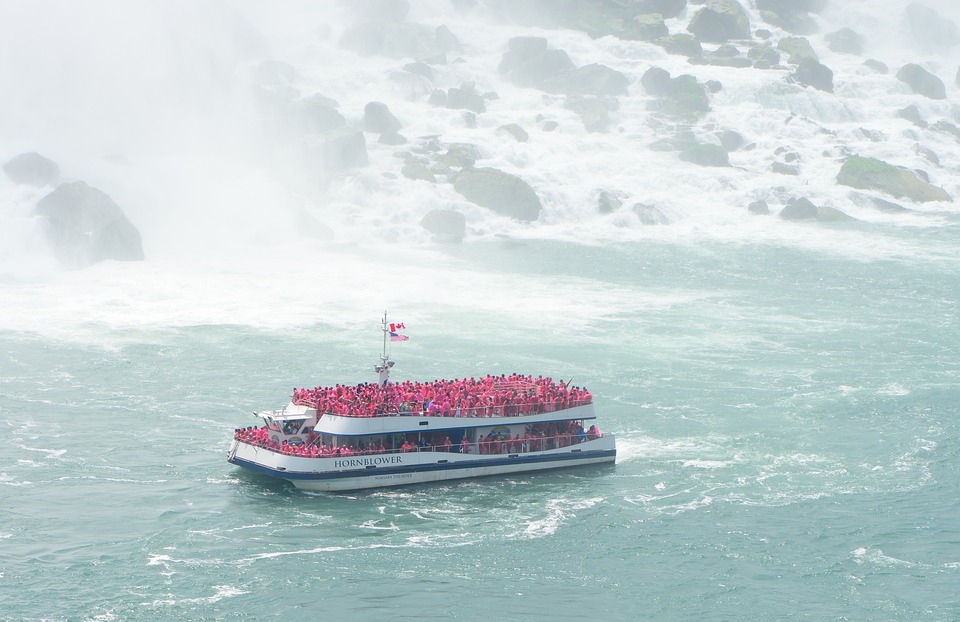Niagara Falls in Social Media: A New Age of Artistic Expression
Introduction
Niagara Falls, the iconic natural wonder located on the border between the United States and Canada, has long been a source of inspiration for artists and creatives throughout history. From paintings to photographs, the falls have captivated the imagination of countless individuals, leading to the creation of stunning works of art. However, with the rise of social media, the way in which Niagara Falls is portrayed and experienced has undergone a significant transformation. This article explores the impact of social media on artistic expression at Niagara Falls, examining the ways in which platforms such as Instagram, Facebook, and Twitter have influenced the way the falls are perceived and represented in the digital age.
Historical Depictions of Niagara Falls
Niagara Falls has been a subject of artistic expression for centuries, with artists from around the world flocking to the site to capture its breathtaking beauty. Some of the earliest depictions of the falls can be found in the works of 17th-century European explorers and settlers, who sought to convey the grandeur of the natural landscape to audiences back home. As the popularity of Niagara Falls grew, so too did the number of artistic representations, with painters, photographers, and writers all contributing to the rich tapestry of imagery and literature surrounding the falls.
In the 19th century, the rise of industrialization and the expansion of transportation networks made Niagara Falls more accessible to a wider audience. This newfound accessibility led to a surge in tourism, with visitors from all walks of life flocking to the falls to witness its natural splendor firsthand. As a result, artists and writers flocked to the site, seeking to capture the majesty of the falls in their work.
The advent of the 20th century saw a further proliferation of visual and literary representations of Niagara Falls, as advancements in technology made it easier than ever to photograph and document the natural world. The falls became a popular subject for postcards, travel brochures, and tourist memorabilia, further solidifying its status as a global icon of natural beauty.
Social Media and the Digital Age
In recent years, the emergence of social media platforms such as Instagram, Facebook, and Twitter has revolutionized the way in which individuals experience and interact with the world around them. With the ability to instantly capture and share images and videos, social media has given rise to a new form of artistic expression, allowing users to showcase their unique perspectives and creative visions to a global audience.
Niagara Falls has not been immune to the influence of social media, with countless individuals taking to platforms such as Instagram to share their personal experiences and encounters with the falls. The hashtag #NiagaraFalls has been used millions of times, with users from all corners of the globe contributing to a vast and ever-expanding digital archive of imagery and narratives surrounding the site.
The Impact of Social Media on Artistic Expression
The rise of social media has had a profound impact on the way in which Niagara Falls is portrayed and experienced by artists and creatives. With the ability to instantly capture and share images and videos, individuals are able to present their own unique perspectives of the falls, offering a diverse and multifaceted portrayal of the natural wonder.
One of the most significant ways in which social media has impacted artistic expression at Niagara Falls is through the democratization of the creative process. Unlike traditional forms of artistic representation, which were often limited to trained professionals or established artists, social media has given rise to a new generation of amateur photographers, filmmakers, and storytellers, all of whom are able to contribute their own unique viewpoints to the ongoing narrative of the falls.
Furthermore, the interactive nature of social media has facilitated a new form of artistic collaboration and dialogue, with users able to engage with and respond to each other’s work in real time. This sense of community and exchange has led to the formation of online communities centered around the falls, where individuals can share their own experiences, tips, and insights with each other, thereby enriching the collective understanding and appreciation of Niagara Falls.
The Visual Language of Social Media
In addition to its impact on the creation and sharing of artistic representations of Niagara Falls, social media has also influenced the visual language and aesthetics associated with the site. The rise of platforms such as Instagram has led to the popularization of certain styles and tropes of photography, with users often gravitating towards specific compositions, filters, and editing techniques in order to convey a particular mood or atmosphere.
At Niagara Falls, this has resulted in the proliferation of certain visual motifs and themes, such as the use of long exposure photography to capture the movement and dynamism of the falls, or the incorporation of human figures into the landscape to convey a sense of scale and perspective. Additionally, the prevalence of digital editing tools has allowed individuals to enhance and manipulate their images in order to highlight specific aspects of the falls, whether it be the play of light and shadow, the textures and patterns of the water, or the juxtaposition of natural and human elements.
The Influence of Social Media on Tourism and Engagement
Beyond its impact on artistic expression, social media has also played a significant role in shaping the way in which tourists engage with and experience Niagara Falls. With the ability to instantly share their experiences and impressions of the falls, visitors have become active participants in the creation of a digital archive of imagery and narratives that collectively shape the public perception and understanding of the site.
This has led to a more interactive and immersive form of tourism, where individuals are encouraged to document and share their experiences in real time, thereby contributing to the ongoing conversation and discourse surrounding Niagara Falls. Moreover, social media has allowed visitors to connect with each other, forming communities and networks around shared experiences and interests, and fostering a sense of camaraderie and solidarity among those who have been touched by the beauty of the falls.
In turn, the influence of social media on tourism has prompted local authorities and businesses to adopt new strategies and initiatives in order to harness the power of digital media for the promotion and preservation of Niagara Falls. From the implementation of user-generated content campaigns and influencer partnerships to the development of immersive digital experiences and interactive installations, various stakeholders have recognized the potential of social media as a means of engaging with and attracting new audiences to the site.
Challenges and Considerations
While social media has undeniably enriched and expanded the artistic representation and experience of Niagara Falls, it has also given rise to certain challenges and considerations that must be addressed in order to ensure the responsible and sustainable use of digital media in the context of the falls.
One of the most pressing issues is the potential for overexposure and commodification of the site, as the relentless stream of visually striking imagery and narratives can lead to a sense of desensitization or exploitation of the natural wonder. Furthermore, the pursuit of capturing the perfect shot for social media can sometimes lead to risky behavior and disregard for safety protocols, threatening both the well-being of individuals and the preservation of the falls.
Additionally, the proliferation of digital media has raised questions about the authenticity and accuracy of representations of Niagara Falls, with the potential for manipulated or exaggerated imagery leading to misconceptions and misinterpretations of the site. This highlights the importance of promoting responsible and ethical practices in the creation and sharing of digital content, in order to ensure that the integrity and truth of the natural landscape are upheld.
Conclusion
Niagara Falls continues to be a cherished source of inspiration and wonder for artists and creatives around the world, and the rise of social media has ushered in a new era of artistic expression and engagement with the site. By enabling individuals to capture and share their personal experiences and perspectives of the falls, social media has transformed the way in which Niagara Falls is portrayed and perceived, giving rise to a diverse and dynamic digital archive of imagery and narratives that collectively enrich the global understanding and appreciation of the natural wonder.
As social media continues to evolve and shape the way in which we experience and engage with the world around us, it is essential that we remain vigilant in addressing the challenges and considerations that arise from the digital representation of Niagara Falls, in order to ensure that the integrity and authenticity of the site are preserved for future generations to enjoy and cherish.

